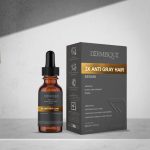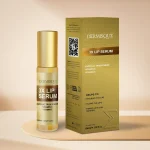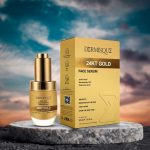
Blog
Hyaluronic Acid: Natural Food Sources & How to Include It in Your Daily Routine
- By admin on
- August 6, 2024
Hyaluronic acid (HA) is a naturally occurring substance in the body known for its incredible ability to retain moisture, providing significant benefits for skin health, joint function, and overall wellness. While HA is commonly found in various skincare products and supplements, it can also be sourced from certain foods. Including these foods in your daily routine can help boost your body’s natural HA levels, promoting healthier skin and joints. Here’s a guide on the natural food sources of hyaluronic acid and how to incorporate them into your diet.
Natural Food Sources of Hyaluronic Acid
- Bone Broth
- Benefits: Bone broth is rich in HA, collagen, and other nutrients that support joint and skin health.
- How to Include: Use bone broth as a base for soups, stews, and sauces. Drink it as a warm, nourishing beverage, or incorporate it into your daily meals.
- Root Vegetables
- Benefits: Root vegetables like sweet potatoes, carrots, and turnips are high in magnesium, which is essential for HA production.
- How to Include: Roast, steam, or mash these vegetables as a side dish. Add them to soups, stews, or salads for an added nutritional boost.
- Soy-Based Products
- Benefits: Soy products such as tofu, edamame, and soy milk contain isoflavones that help maintain HA levels in the body.
- How to Include: Add tofu to stir-fries, salads, and soups. Snack on edamame or use soy milk as a dairy alternative in your coffee, cereal, or smoothies.
- Leafy Greens
- Benefits: Leafy greens like kale, spinach, and Swiss chard are rich in antioxidants and vitamins that support HA production.
- How to Include: Use these greens in salads, smoothies, or as a base for your meals. Sauté them with garlic and olive oil for a simple, nutritious side dish.
- Citrus Fruits
- Benefits: Citrus fruits like oranges, lemons, and grapefruits are high in vitamin C, which is crucial for HA synthesis.
- How to Include: Start your day with a glass of freshly squeezed orange juice. Add lemon or lime slices to your water, or enjoy a grapefruit as a refreshing snack.
- Nuts and Seeds
- Benefits: Nuts and seeds, especially those high in magnesium like almonds and pumpkin seeds, support HA production.
- How to Include: Snack on a handful of nuts or seeds, add them to your salads, or blend them into smoothies for a nutrient-dense boost.
How to Include Hyaluronic Acid-Rich Foods in Your Daily Routine
- Start Your Day Right
- Begin your day with a smoothie that includes leafy greens, a citrus fruit, and a handful of nuts or seeds. This combination provides a powerful start, delivering essential vitamins and minerals that support HA production.
- Hydrating Lunch Options
- Opt for a salad with leafy greens, root vegetables, and a protein source like tofu or chicken. Dress it with a citrus-based vinaigrette to enhance HA synthesis.
- Bone Broth-Based Soups and Stews
- Prepare soups and stews using bone broth as a base. Add a variety of vegetables, lean proteins, and herbs to create a nourishing meal that supports joint and skin health.
- Snack Smart
- Keep nuts, seeds, and citrus fruits handy for snacking. These foods are not only convenient but also packed with nutrients that help maintain HA levels.
- Evening Meals
- Incorporate roasted root vegetables or a side of sautéed leafy greens into your dinner. Pair these with a serving of bone broth or a soy-based dish for a well-rounded, HA-boosting meal.
Additional Tips for Boosting Hyaluronic Acid Naturally
- Stay Hydrated: Drinking plenty of water is crucial for maintaining HA levels. Adequate hydration helps HA perform its role in retaining moisture in the skin and joints.
- Limit Sugar Intake: Excessive sugar can reduce HA levels in the body. Opt for natural sweeteners and reduce processed sugar consumption to maintain healthy HA levels.
- Regular Exercise: Physical activity stimulates the production of HA and other beneficial compounds in the body. Aim for a balanced exercise routine that includes both cardio and strength training.
Conclusion:
Including hyaluronic acid-rich foods in your daily diet is a natural and effective way to support your skin and joint health. By incorporating these foods into your meals and snacks, you can enhance your body’s natural HA levels, leading to improved hydration, elasticity, and overall wellness. Stay hydrated, eat a balanced diet, and enjoy the benefits of naturally occurring hyaluronic acid in your everyday life.










